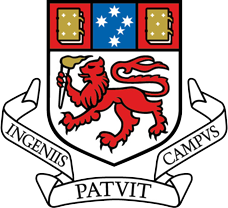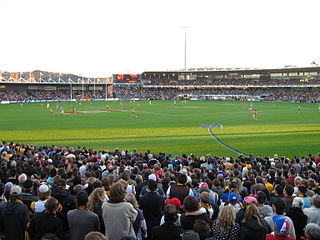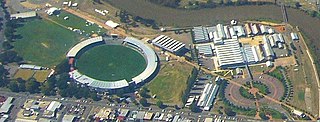
Launceston is a city in the north of Tasmania, Australia, at the confluence of the North Esk and South Esk rivers where they become the Tamar River (kanamaluka). Launceston has a population of 110,472 in the significant urban area (2020). Launceston is the second most populous city in Tasmania after the state capital, Hobart, As of 2020, Launceston is the 17th largest city in Australia. Launceston is fourth-largest inland city and the ninth-largest non-capital city in Australia. Launceston is the most liveable regional city, and was one of the most popular regional cities to move to in Australia from 2020 to 2021. Launceston won the Australian town of the year in 2022.

The University of Tasmania (UTAS) is a public research university, primarily located in Tasmania, Australia. Founded in 1890, it is Australia's fourth oldest university. Christ College, one of the university's residential colleges, first proposed in 1840 in Lieutenant-Governor Sir John Franklin's Legislative Council, was modeled on the Oxford and Cambridge colleges, and was founded in 1846, making it the oldest tertiary institution in the country. The university is a sandstone university, a member of the international Association of Commonwealth Universities, and the Association of Southeast Asian Institutions of Higher Learning.

York Park is a sports ground in the Inveresk and York Park Precinct, Launceston, Australia. Holding 19,000 people - the largest capacity stadium in Tasmania -York Park is known commercially as University of Tasmania Stadium and was formerly known as Aurora Stadium under a previous naming rights agreement signed with Aurora Energy in 2004. Primarily used for Australian rules football, its record attendance of 20,971 was set in June 2006, when Hawthorn Football Club played Richmond Football Club in an Australian Football League (AFL) match.

Beatrice Louise "Bea" Maddock was an Australian artist.

The Tasmanian Government Railways (TGR) was the former operator of the mainline railways in Tasmania, Australia. Formed in 1872, the railway company was managed by the Government of Tasmania, and existed until absorption into the Australian National Railways Commission in 1978.

The Y class was a class of diesel locomotives built by the Tasmanian Government Railways between 1961 and 1971.
Timothy Colin Thorne was an Australian contemporary poet.

The Tasmanian Museum and Art Gallery (TMAG) is a museum located in Hobart, Tasmania. The museum was established in 1846, by the Royal Society of Tasmania, the oldest Royal Society outside England. The TMAG receives 400,000 visitors annually.
Invermay is a residential locality in the local government area (LGA) of Launceston in the Launceston LGA region of Tasmania. The locality is about 3 kilometres (1.9 mi) north of the town of Launceston. The 2016 census recorded a population of 3061 for the state suburb of Invermay. It is a suburb of Launceston, which contains the minor suburb of Inveresk, it is located on the eastern side of the Tamar River and the northern side of the North Esk River, the suburb is most notable as being home to York Park.

Mount Barrow is a mountain in the northern region of Tasmania, Australia. With an elevation of 1,406 metres (4,613 ft) above sea level, the mountain is located 22 kilometres (14 mi) east-north-east of Launceston. The mountain habitat is a mixture of temperate old growth rainforest, subalpine and alpine landscapes.

The Inveresk and York Park Precinct in Launceston, Tasmania, once Tasmania's largest industrial site, is now the major cultural heart of the town. It is home to York Park, one of two current Australian Football League venues in Tasmania, the Queen Victoria Museum and Art Gallery, TAFE Tasmania, and The School of Visual and Performing Arts. The annual Royal Launceston Show is held every October at the Inveresk Showgrounds. Invermay Park and other minor facilities are located behind York Park and near to the Inveresk Showgrounds. The precinct is also home to the Annexe Theatre, one of Tasmania's leading venues and home of CentrStage Theatre.
Norman James Brian Plomley regarded by some as one of the most respected and scholarly of Australian historians and, until his death, in Launceston, the doyen of Tasmanian Aboriginal scholarship.

William Buelow Gould was an English and Van Diemonian (Tasmanian) painter. He was transported to Australia as a convict in 1827, after which he would become one of the most important early artists in the colony, despite never really separating himself from his life of crime.
Robert Geoffrey Hewett "Bob" Green AM was an Australian naturalist, photographer, conservationist, and long-term Curator of the Queen Victoria Museum and Art Gallery in Launceston, Tasmania.
Lola Greeno is an artist, curator and arts worker of Aboriginal descent. She studied a Bachelor of Fine Arts at the University of Tasmania in Launceston, finishing her degree in 1997.
Julie Gough is an artist, writer and curator based in Tasmania, Australia.
Herbert Hedley Scott (1866–1938) was curator and director of the Queen Victoria Museum and Art Gallery in Tasmania. Born in England, Scott became interested in natural history while living with his family in New York and Pennsylvania. He moved to New Zealand for a brief period in 1887 before arriving in Launceston in Tasmania, where he resided until his death. It was there he met and married Francis Fannie née Stearnes. The museum that Scott began sole administration was only curated on a part-time basis by his predecessor, Alexander Morton, and he went on to introduce improvements such as new galleries and activities. The microscopical club he previously began eventually became directed toward research on natural history, a department he separated from the geological displays of his museum. He also created a display of vertebrates in 1909. Scott's publications included brochures on paleontology and in the proceedings of the Royal Society of Tasmania. He is noted for research on fossil species of Nototherium, along with other extinct mammals and birds. In 1934 he was awarded the Royal Society of Tasmania Medal. He died on 1 March 1938 at Launceston, being survived by Frances Fannie née Stearnes, who had married in 1893, and their daughter and son, Eric Oswald Gale Scott, who succeeded him as director of the QVMAG.
Sue Pedley is an Australian multi-media artist known for site-specific artworks in Australia and overseas. She has participated in residencies including the Bundanon Trust Creative Research Residency in 2016, the Tokyo Wonder Site in 2012, and the 2008 International Sculpture Symposium, Vietnam. Pedley works solo and in collaboration with other artists.
Mandy Quadrio is a Brisbane/Meanjin-based contemporary artist of Palawa heritage.
Eric Oswald Gale Scott was an Australian teacher, museum director, ichthyologist and pacifist. He was the director of the Queen Victoria Museum and Art Gallery in Launceston.











